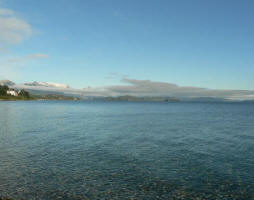 Virtual Water Not a Solution
Virtual Water Not a Solution
| The implementation of virtual water into trading deals has been suggested as a solution to the global inequality of renewable freshwater, but it may not be as revolutionary as first thought. According to researchers writing in Environmental Research Letters, the existing amount of virtual water is not large enough to overcome the existing inequalities. |
Lead author David Seekell of the University of Virginia said, “Virtual water is unlikely to overcome these constraints because there just isn’t enough to go around.” Eighty percent of humanity currently lives in regions where water security is threatened; this means that as the global population grows against a finite volume of freshwater, a more equal distribution of water use between countries will be needed.
Virtual water – the amount of water it takes to produce goods or a service – has been suggested as a possible solution to this growing problem by using virtual water values to inform international trade deals. Most goods carry a virtual water value (for example, producing one kilogram of beef requires 15 thousand litres of water) which can act as a significant tool for addressing a country’s input and output of water.
For example, a trade deal could be struck where products with a high virtual water value (such as oranges) could be exported from countries where there is an efficient and abundant water supply to a country where the requirement of water to grow that particular product is more of a burden. This would allow the receiving country to save on water, relieving the pressure on their limited water resources, and allowing the water to be used elsewhere in its infrastructure.
This study, performed by researchers at the University of Virginia, assessed the inequality in water use between countries and examined how different uses such as industrial, household and for agricultural products consumed domestically contributed to the overall inequality. To do this, the authors compared United Nations statistics on both social and human development statuses with water usage statistics for a range of countries.
Their study concludes that virtual water transfers are not sufficient to equalise water use among nations, because water used for agriculture consumed domestically dominates a nation’s water needs and cannot be completely compensated by current volumes of virtual water transfers.
Seekell continued, “Even if it cannot completely equalise water use between countries, virtual water may stand to contribute to this effort if there is increased transfer from high water use to low water use countries. But the danger here is that these transfers effectively prop up populations above the carrying capacity of their natural resources, and this could actually erode a population’s long-term resilience to drought or other disasters. There are a myriad of political and economic barriers to trade, and because water is not usually a deciding factor in trade decisions it is unlikely that global trade will ever be viewed as efficient from a water use point of view.”
This paper can be downloaded from the website of the Institute of Physics Publishing: http://iopscience.iop.org/1748-9326/6/2/024017
| Contact information | n/a |
|---|---|
| News type | Inbrief |
| File link |
http://www.waterlink-international.com/news/id1942-Virtual_Water_Not_a_Solution.html |
| Source of information | Water Link International |
| Keyword(s) | Climatic change, drought, water, water quality, water use |
| Subject(s) | AGRICULTURE , DRINKING WATER , FINANCE-ECONOMY , INDUSTRY |
| Geographical coverage | United States, |
| News date | 14/06/2011 |
| Working language(s) | ENGLISH |
 you are not logged in
you are not logged in





